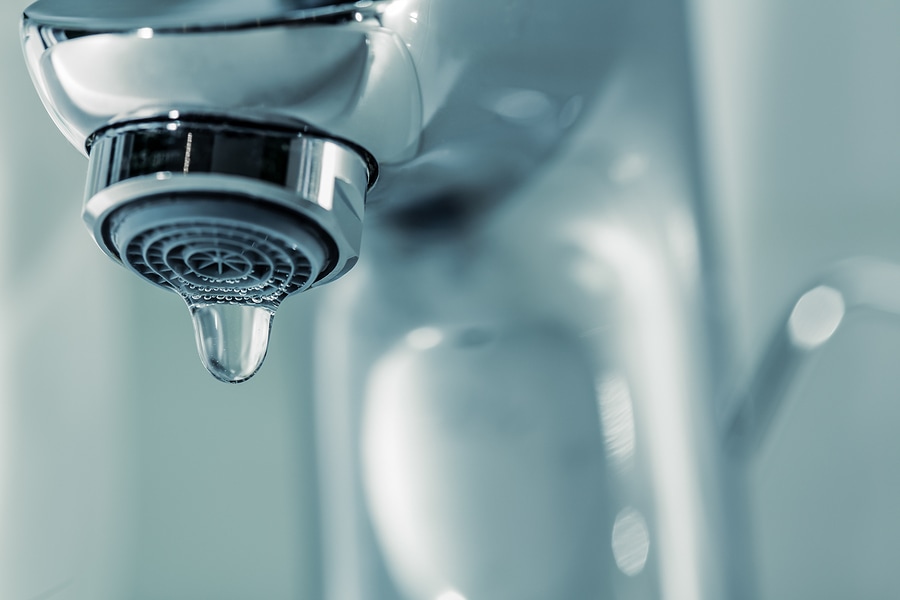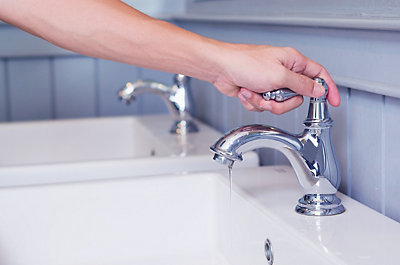Your Merits of Fixing a Broken Faucet
Your Merits of Fixing a Broken Faucet
Blog Article
Everybody is bound to have their private way of thinking when it comes to Should I Repair or Replace a Leaky Faucet?.

Trickling faucets may feel like a minor trouble, yet their impact exceeds simply the aggravation of the sound. From wasting water to sustaining unneeded economic prices and health risks, neglecting a trickling tap can bring about various consequences. In this short article, we'll look into why it's important to address this typical family concern promptly and effectively.
Wastage of Water
Ecological Influence
Leaking faucets contribute considerably to water wastage. According to the Environmental Protection Agency (EPA), a solitary tap leaking at one drip per second can waste greater than 3,000 gallons of water each year. This not only strains water sources however also influences environments and wildlife depending on them.
Financial Expenses
Increased Water Costs
Beyond the ecological impact, trickling faucets can blow up water bills considerably. The built up wastefulness with time translates right into greater energy expenses, which could have been stayed clear of with prompt repair work.
Prospective Home Damages
Moreover, extended trickling can lead to damage to components and surface areas bordering the faucet. Water accumulation can cause staining, rust, and also architectural concerns if left neglected, resulting in additional repair work prices.
Wellness Problems
Mold And Mildew and Mold Development
The consistent visibility of dampness from a trickling tap produces a suitable atmosphere for mold and mold growth. These fungi not just endanger interior air high quality but additionally posture health and wellness risks, particularly for people with breathing conditions or allergies.
Waterborne Conditions
Stagnant water in dripping taps can end up being a breeding place for germs and other virus, enhancing the threat of waterborne illness. Impurities such as Legionella microorganisms flourish in stationary water, potentially causing serious health problems when ingested or inhaled.
Do it yourself vs. Professional Repair service
Advantages and disadvantages of Do It Yourself Repair
While some might try to fix a leaking tap themselves, do it yourself repairs come with their own collection of obstacles. Without correct knowledge and tools, DIY attempts can worsen the concern or bring about insufficient fixings, prolonging the problem.
Benefits of Hiring a Professional Plumber
Hiring a professional plumber ensures that the underlying cause of the dripping faucet is addressed effectively. Plumbing professionals have the experience and devices to diagnose and fix tap problems efficiently, conserving time and minimizing the danger of additional damage.
Step-by-Step Overview to Taking Care Of a Dripping Faucet
Devices Needed
Before trying to repair a dripping tap, collect the required devices, including a flexible wrench, screwdrivers, substitute parts (such as washing machines or cartridges), and plumber's tape.
Common Tap Issues and Their Solutions
Identify the kind of tap and the particular concern causing the drip. Typical troubles consist of damaged washers, corroded shutoff seats, or faulty O-rings. Refer to maker guidelines or online tutorials for step-by-step support on fixings.
Preventive Measures
Regular Maintenance Tips
To avoid dripping faucets, carry out routine maintenance such as cleaning up aerators, checking for leakages, and changing damaged components immediately. In addition, take into consideration mounting water-saving gadgets or updating to much more reliable components.
Value of Prompt Fixes
Resolving leaking faucets as soon as they're seen protects against additional water wastage and potential damages, eventually saving both water and cash over time.
Effect On Building Value
Perception of Well-Maintained Building
Preserving a home in good condition, including attending to maintenance problems like trickling faucets, boosts its perceived worth and value amongst potential purchasers or lessees.
Influence on Resale Value
Properties with well-kept plumbing components, consisting of faucets, command higher resale values in the property market. Resolving dripping faucets can contribute to a positive impression throughout home evaluations and negotiations.
Environmental Duty
Specific Contribution to Preservation
Taking responsibility for taking care of trickling faucets lines up with more comprehensive efforts toward water conservation and ecological sustainability. Every person's activities jointly make a significant impact on protecting valuable sources.
Lasting Living Practices
By focusing on timely repair services and taking on water-saving behaviors, people add to sustainable living practices that benefit both existing and future generations.
Verdict
Resolving a trickling tap exceeds mere convenience; it's a vital action toward preserving water, decreasing economic expenses, and safeguarding health and wellness and home. Whether via DIY fixings or professional support, doing something about it to fix leaking taps is a tiny yet impactful way to promote accountable stewardship of sources and add to a much healthier, more sustainable future.
How to Fix a Dripping or Leaky Faucet
A leaking faucet is one of the most common problems that homeowners encounter, but it being commonplace doesn’t make it any less annoying. The constant drip drip drip of a leaking bathtub faucet, showerhead, or sink tap can disturb your home’s serenity. Left neglected, a dripping faucet can also result in higher water bills and discoloration or mold growth in your sink or plumbing fixtures.
Fortunately, you don’t have to be a trained plumber to know how to stop a dripping faucet. With some basic tools, replacement parts, and a little patience, leaky faucet repair is a breeze. In this article, we’ll explain what causes dripping faucets and how you can fix them.
What Causes a Leaking Faucet?
Kitchen and bathroom faucets come in all manner of designs, but most involve some combination of valves, O-rings, seals, and washers. The O-ring is usually the weakest link, but any one of these pieces can wear down over time. Heat, moisture, temperature fluctuations, minerals, mold, and movement can contribute to warping and corrosion, breaking the watertight seal. This just comes with the territory of being a homeowner. Everything is always subject to wear and tear, and some component parts of your appliances and fixtures need to be replaced on occasion. At least replacement O-rings are cheap!
More rarely, dripping faucets can be a symptom of excessively high water pressure. Were this the case in your home, you would probably notice that the leak is not isolated to one faucet. Water pressure issues are harder to resolve on your own. We recommend contacting a professional plumber if you suspect your water pressure is too high.
How to Fix a Dripping Faucet
Pipe wrench or monkey wrench Allen wrench set Screwdrivers Old towel or rag Shut off the water.
Before you do anything, you need to turn off the water to keep from drenching your kitchen or bathroom. You should find a valve under the sink and against the wall. Once you’ve turned this valve, try turning the faucet on to confirm that the water source has been cut off.
If you can’t locate your local valve for the faucet you’re working on, you can always shut off the water to the house at the main valve. Of course, this will prohibit anyone from using the sinks, showers, or toilets while you’re working on the faucet that’s giving you trouble.
Plug or block the drain.
You’ll be disassembling the faucet and removing some small bits of hardware. Plug the drain with a stopper or rag to avoid the possibility of a small screw falling into your P-trap.
Take apart the faucet assembly.
There are several varieties of kitchen and bathroom faucets, each with its own manner of assembly. For detailed instructions on how to disassemble your faucet, you can refer to the fixture’s manual or contact the manufacturer. If you know whether you have a ball, disc, cartridge, or compression faucet, you can find detailed schematics online.
In general, you need to begin by removing the faucet handles. You might notice a small screw that you’ll need to remove with a screwdriver or Allen wrench. If you don’t see any visible securing hardware, it’s likely hidden under a decorative cap that can be unscrewed or popped off with flathead screwdriver.
Remove each piece methodically, consulting a schematic when necessary. Take notes or arrange the pieces in such a way to make it easier to correctly reassemble the faucet later.
Remove the cartridge.
Once you’ve removed the handles and securing hardware, you should be able to remove the valve cartridge or stem. Some cartridges will slide right out. Other faucet models will require you to loosen a nut with a pipe wrench before you can remove the valve stem.
Examine the exposed hardware.
With the cartridge or stem removed, inspect the component parts. Check the rubber O-rings for wear and tear. Also examine the seat washer for corrosion or other damage. These pieces are usually the responsible parties for a dripping faucet, but it’s worth inspecting the other component parts while you have the faucet disassembled.
Find replacement parts.
Once you’ve identified which faucet component has failed, find an identical replacement. Your local hardware store should have O-rings, seat washers, and other standard components in stock. If you have a luxury or uncommon faucet, you may have to contact the manufacturer for a replacement part.
It’s a good idea to take your old parts with you to the hardware store so you can compare them with the store’s inventory and be sure you’re purchasing the correct replacement.
Reassemble the faucet.
With your new parts in hand, reconstruct the faucet and handles. Don’t be tempted to overtighten screws or nuts. You might think this could create a better seal, but it can instead damage or bend a delicate part of the assembly and create a new problem for you.
Turn on the water and test the faucet.
The only thing left to do is test your work. Unplug the sink, turn the water back on, and try the faucet. Congratulate yourself on a job well done!
https://www.libertyhomeguard.com/how-to-fix-a-dripping-or-leaky-faucet/

Hopefully you enjoyed reading our excerpt on . Thanks so much for taking time to read our blog. You should pause to share this blog post if you enjoyed reading it. Thanks a lot for going through it.
Report this page